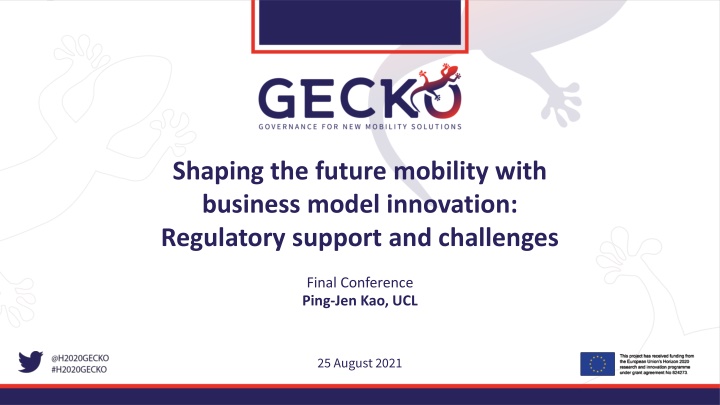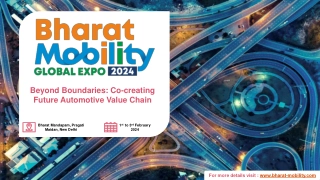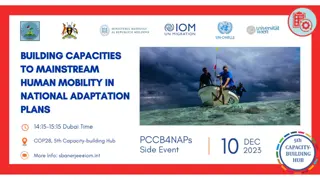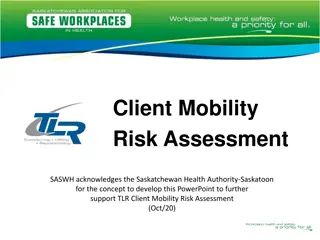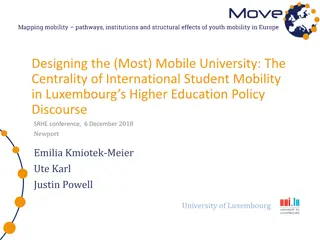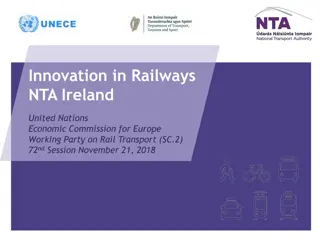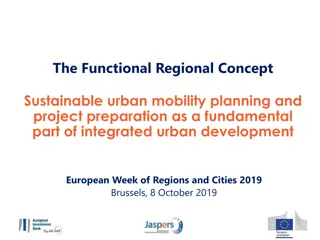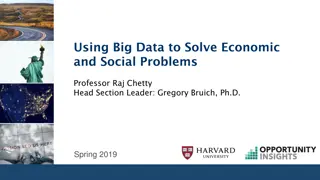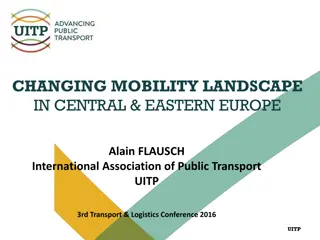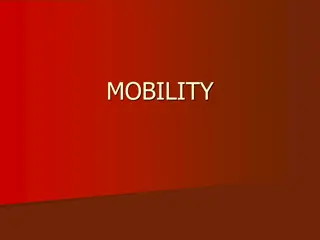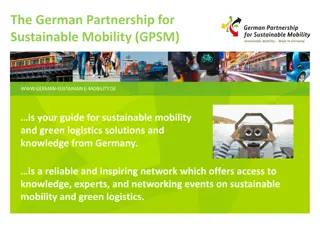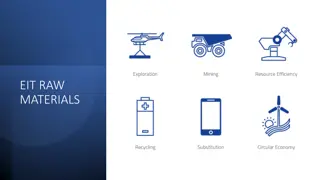Shaping the Future Mobility with Business Model Innovation
"Explore new mobility services, regulatory challenges, and opportunities for sustainable business models in the evolving transportation landscape. Discover insights on technological advancements, regulatory support, environmental impact assessment, and public-private partnerships."
Download Presentation

Please find below an Image/Link to download the presentation.
The content on the website is provided AS IS for your information and personal use only. It may not be sold, licensed, or shared on other websites without obtaining consent from the author.If you encounter any issues during the download, it is possible that the publisher has removed the file from their server.
You are allowed to download the files provided on this website for personal or commercial use, subject to the condition that they are used lawfully. All files are the property of their respective owners.
The content on the website is provided AS IS for your information and personal use only. It may not be sold, licensed, or shared on other websites without obtaining consent from the author.
E N D
Presentation Transcript
Shaping the future mobility with business model innovation: Regulatory support and challenges Final Conference Ping-Jen Kao, UCL 25 August 2021
Contents New mobility services and technologies and their business model Regulator support/challenges for sustainable business model innovation The impact of COVID-19 on sustainable business model innovation
New mobility services and technologies that GECKO reviewed LIST OF NEW MOBILITY SERVICES AND TECHNOLOGIES REVIEWED: Connected, Cooperative And Automated Mobility (e.g. connected & automated vehicle, drone delivery) Infrastructure, Network And Traffic Management (e.g. big data in traffic management; hyperloop) MaaS and MaaS platforms Shared on-demand Mobility (e.g. ride hailing; bike sharing) Review based on these criteria: Technological Operational Social/ behavioral Business Security/cybersecurity, safety, data protection etc. More details can be found in D1.1 & D1.4 on the GECKO website.
The constraints and opportunities of current business models Illustration of Analysis on CCAM More details can be found in D1.2 on the GECKO website.
Regulatory support/ challenges for sustainable business model Support Transparent and well- established data policies Stronger public-private partnership (PPP) Model Public education Persuade people to adopt new mobility services and technologies for environmental reasons is not always an effective way. (where is economic benefits). The city needs to make sure the collaboration is profitable and sustainable. Data standard, APIs, and other policies are difficult to be consistent especially given the nature of data variety. Challenges The public/private dialogue is region-specific, it s a city to city approach.
Regulatory support/ challenges for sustainable business model Support Assessment of the environmental footprint New urban space allocation Subsidies for peripheral transportation Need to charge the environmental impact. New innovators need to prove the contribution to the city objectives, benefits for the local community in order to receive support, possible subsidies, etc. players and Why spaces for business that make money? The private sector needs to prove the benefit for the municipality. would cities provide Challenges What environmental cities/regions? are standards footprint for across
The impact of COVID-19 on sustainable business model innovation The pandemic is a double-edged sword for sustainability A trend of more home-based living and working environment Moving goods and services without human interaction is a preferable option Potentially increased car ownership in the future
Thank you for listening Ping-Jen Kao, UCL, p.kao@ucl.ac.uk The sole responsibility for the content of this document lies with the authors. It does not necessarily reflect the opinion of the European Union. Neither the INEA nor the European Commission are responsible for any use that may be made of the information contained therein.
